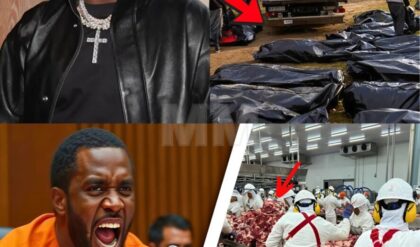Carl Anthony Towns Trade: A Shocking Move with Major Implications for the Knicks and Timberwolves
In the world of professional basketball, surprises are often part and parcel of the game, but few anticipated the recent trade that sent Carl Anthony Towns from the Minnesota Timberwolves to the New York Knicks. Just as training camps were set to begin, this shocking move sent ripples through the NBA community. The sudden nature of this trade, along with the implications for both teams involved, has left fans and analysts alike reeling from the seismic shifts in team dynamics.
The Trade: Details and Immediate Reactions
At its core, the trade involves the Knicks sending Julius Randle, Dante DiVincenzo, and a first-round pick to Minnesota in exchange for Towns. Upon hearing the news, many, including myself, thought it was a hoax. After all, it seemed improbable that Minnesota would part ways with a player of Towns’ caliber, especially after they made a significant playoff run just months earlier.
In my previous discussions about the Knicks, I had highlighted their ongoing struggle to secure a solid center. With the offseason moves they made, including bringing in Jalen Brunson, OG Anunoby, Mikal Bridges, and Dante DiVincenzo, it appeared they had bolstered their perimeter game. However, the lack of a strong presence in the paint was evident. Losing Isaiah Hartenstein to free agency compounded this issue, raising the stakes for the Knicks as they entered the training camp period.
The timing of the trade raises questions. Just days prior, news broke regarding Mitchell Robinson’s injury status, which likely made the Knicks more desperate to secure a reliable big man. Bringing in Towns not only addresses their immediate need for size but also enhances their overall roster depth. This trade enables the Knicks to explore various lineup options, including potentially pairing Towns with Robinson or placing him at the five spot to capitalize on his offensive versatility.
The Knicks’ Perspective: A Smart Move?
From the Knicks’ perspective, acquiring Towns is a move that positions them as legitimate contenders in the Eastern Conference. The Knicks have struggled to find a suitable complement for Brunson and their other perimeter players, and Towns provides the offensive prowess and rebounding ability they need. Historically, he has been a dominant force, capable of stretching the floor with his shooting while also providing a physical presence in the post.
This trade also signals a shift in the Knicks’ strategy. By moving Randle, they are not only acquiring a player who fits better with their current roster, but they are also sending a message that they are serious about contending for a championship. The addition of Towns allows them to adapt their game plan to compete against Eastern Conference powerhouses like the Boston Celtics and the Philadelphia 76ers.
However, it is essential to acknowledge the emotional ramifications of the trade, particularly for DiVincenzo. The former Villanova star was part of a tightly-knit group that included Brunson, Bridges, and Josh Hart. Losing that camaraderie is a significant blow, especially considering the chemistry they developed during their college years. The NBA, as we know, is a business, and such trades can disrupt personal relationships formed within teams.
Minnesota Timberwolves: A Shocking Departure
The Timberwolves’ decision to trade Towns, especially so soon after their playoff success, is perplexing. Historically, the franchise has struggled to find consistent playoff success outside of the Kevin Garnett era, making their recent playoff appearance even more significant. To trade away a pivotal player after such a promising season raises eyebrows.
One possible explanation lies in financial motivations. With a roster comprising several high-salaried players, including Rudy Gobert and Anthony Edwards, the Timberwolves faced potential long-term financial strain. Randle’s contract, set to expire in 2025, provides them with an opportunity to recalibrate their payroll, potentially allowing them to remain competitive without being hamstrung by long-term financial commitments.
Additionally, the Timberwolves’ recent roster moves suggest a pivot towards a more sustainable and balanced approach. By acquiring Randle, they gain a talented player who can fill the void left by Towns while potentially reshaping the team’s identity moving forward. DiVincenzo, too, offers the Timberwolves added perimeter shooting and depth, which could be critical as they look to maximize their resources this season.
Assessing the Trade: Grades and Future Implications
If we were to grade the trade, I would lean towards giving Minnesota a B to B+. The financial relief and the potential upside of Randle and DiVincenzo could lead to a more balanced team, but the loss of Towns is undeniably significant. Meanwhile, the Knicks would receive an A for their proactive approach in securing a star player who can immediately impact their chances at a championship run. Towns provides them with the necessary versatility and depth to challenge the top teams in the league.
Ultimately, both teams have made bold moves that could define their respective futures. The Knicks are aiming for immediate success, while the Timberwolves seem to be charting a new course with a longer-term vision. As the season unfolds, it will be fascinating to see how these changes play out on the court and what further adjustments each team may make in pursuit of their championship aspirations.
In conclusion, this trade has set the stage for a thrilling NBA season. With both teams shifting gears, fans can expect an exhilarating mix of excitement and uncertainty. Whether it leads to success or disappointment, one thing is clear: the landscape of the league has changed dramatically overnight, and the implications of this trade will reverberate for months to come.





